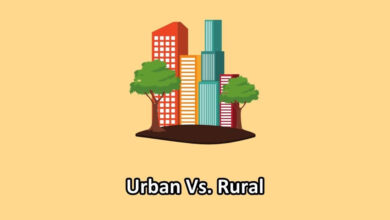In a world marked by diverse political landscapes, the concepts of Authoritarianism and Dictatorship stand out as influential forces shaping nations. Imagine a society where individual freedoms are secondary to state control; this is the realm where Authoritarianism and Dictatorship take center stage.
Authoritarianism is a political system characterized by a strong central power and limited political freedoms. It often involves a single leader or a small group wielding significant control, and suppressing dissent to maintain authority. On the other hand, Dictatorship revolves around a single individual holding absolute power, often gained through force. Both systems share the commonality of centralized authority but differ in their structures and methods.
Authoritarianism Vs. Dictatorship (Comparison Chart)
| Factors | Authoritarian | Dictator |
|---|---|---|
| What are They? | Authoritarianism is a political system characterized by a strong central power and limited political freedoms. | Dictatorship revolves around a single individual holding absolute power, often gained through force. |
| Leadership Structure | Authoritarianism can involve a single leader or a small group of elites. | Dictatorship revolves around a single, dominant individual. |
| Decision-Making Process | Authoritarian regimes may involve collective decision-making among elites. | A dictator makes unilateral decisions without consultation. |
| Political Freedoms | Authoritarianism allows limited political freedoms, with some restrictions. | Dictatorship often completely suppresses political opposition. |
| Media Control | Authoritarian states may control the media but tend to be less strict than dictatorships. | Dictatorships typically exercise stricter control, using media for propaganda. |
| Transition of Power | Authoritarian systems may witness a smoother transition of power, with some continuity. | Dictatorships often face uncertainty and potential conflict during transitions. |
What is Authoritarian?
Authoritarianism is a political philosophy emphasizing strong central authority and limited political freedoms. In an authoritarian state, power is concentrated in the hands of a single leader or a small group, and decisions are made without the consent of the governed.
This often results in a lack of political pluralism, with opposition suppressed to maintain the ruling authority’s dominance.
Characteristics of Authoritarian Rule
- Centralized Power: Authoritarian regimes concentrate power on a single leader or a small group, allowing swift decision-making but often at the expense of democratic processes.
- Limited Political Freedoms: Citizens under authoritarian rule experience restricted political freedoms, with limited or no opposition allowed, suppressing dissent to maintain control.
- State-Controlled Media: Authoritarian states often control media outlets, using them as tools to disseminate propaganda and shape public opinion in favor of the ruling authority.
Who is a Dictator?
A dictator is an individual who holds absolute power and authority over a nation, often obtained and maintained through force and suppression of political opposition. Unlike Authoritarianism, which may involve collective leadership, dictatorship centers around one dominant figure whose decisions are absolute and unchallengeable.
Examples of Dictatorship
Historically, figures like Adolf Hitler in Nazi Germany, Joseph Stalin in the Soviet Union, and more recent instances like Kim Jong-un in North Korea exemplify dictatorship. These leaders wielded immense control, shaping their nations’ destinies without democratic checks and balances.
Key Differences Between Authoritarianism and Dictatorship
- Leadership Structure: Authoritarianism can involve a single leader or a small group, whereas dictatorship revolves around a single, dominant individual.
- Decision-Making Process: Authoritarian regimes may involve collective decision-making, while dictators make unilateral decisions without consultation.
- Political Freedoms: Authoritarianism allows limited political freedoms, while dictatorship often completely suppresses political opposition.
- Media Control: Authoritarian states may control media, but dictatorships typically exercise stricter control, using it as a tool for propaganda.
- Transition of Power: Authoritarian systems may witness a smoother transition of power, while dictatorships often face uncertainty and potential conflict during transitions.
Similarities Between Authoritarianism and Dictatorship
- Centralized Authority: Both systems concentrate power in the hands of a few, whether a single leader or a small group.
- Limited Political Pluralism: Authoritarianism and dictatorship restrict political opposition, limiting the existence of diverse political voices.
- Potential for Human Rights Abuses: Both systems pose risks to human rights, as individual freedoms may be sacrificed in favor of maintaining control and stability.
Impact on Human Rights and Civil Liberties
How Authoritarian and Dictatorial Governments Affect Individual Rights
Under Authoritarian rule, individual rights are often curtailed to maintain the regime’s stability. Citizens may face restrictions on free speech, assembly, and association, leading to a stifling environment for dissent.
In dictatorships, the impact is more severe, with absolute power enabling leaders to infringe on basic human rights, leading to surveillance, arbitrary arrests, and persecution of perceived enemies.
Case studies illustrating the suppression of freedoms under each system
In recent history, countries like China (Authoritarian) and North Korea (Dictatorship) exemplify the suppression of freedoms. China’s strict censorship and surveillance measures restrict citizens’ rights, while North Korea’s dictatorship under Kim Jong-un has led to widespread human rights abuses, including political imprisonment and lack of freedom of expression.
International Response and Human Rights Implications
The international community often grapples with how to respond to human rights abuses in Authoritarian and Dictatorial regimes. Sanctions, diplomatic pressure, and advocacy for human rights become crucial tools.
However, geopolitical considerations sometimes impede robust interventions. Balancing realpolitik with the imperative to protect human rights remains a complex challenge.
Conclusion
In the tapestry of governance, Authoritarianism, and Dictatorship are threads that, while distinct, weave together a narrative of centralized power. As we navigate their nuances and impact on human rights, it becomes evident that the struggle for individual freedoms persists.
Understanding these political paradigms equips us to advocate for a world where governance harmonizes with liberty, ensuring that the lessons of the past inform a future shaped by democratic ideals.



